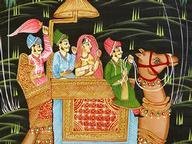12. Initially, PDAZ has little interest in mandrakes as the first thing she reads about them is that they have medicinal properties. For what purpose did early doctors use the root?
From Quiz PDAZ and the Mysterious Mandrake
Answer:
As an anesthetic for surgery
The Greek physician Dioscorides described mandrakes as being "given to those who are going to be cut or burnt (cauterized) and wish to have anesthesia". This property of mandrakes has a basis in truth. Being a member of the nightshade family, the roots contain a narcotic alkaloid. Mandrake was used to treat a wide variety of ailments including melancholy, rheumatism and convulsions. In large doses, it was alleged to cause madness and delirium, which earned it one of its nicknames, "Satan's Apple". Conversely, it was also alleged to be useful in treating demonic possession. PDAZ interprets this to mean that, if a large dose resulted in madness and delirium, the symptoms were treated with another dose...







 Quick Question
Quick Question Top 10% Rated Quiz,
Top 10% Rated Quiz,